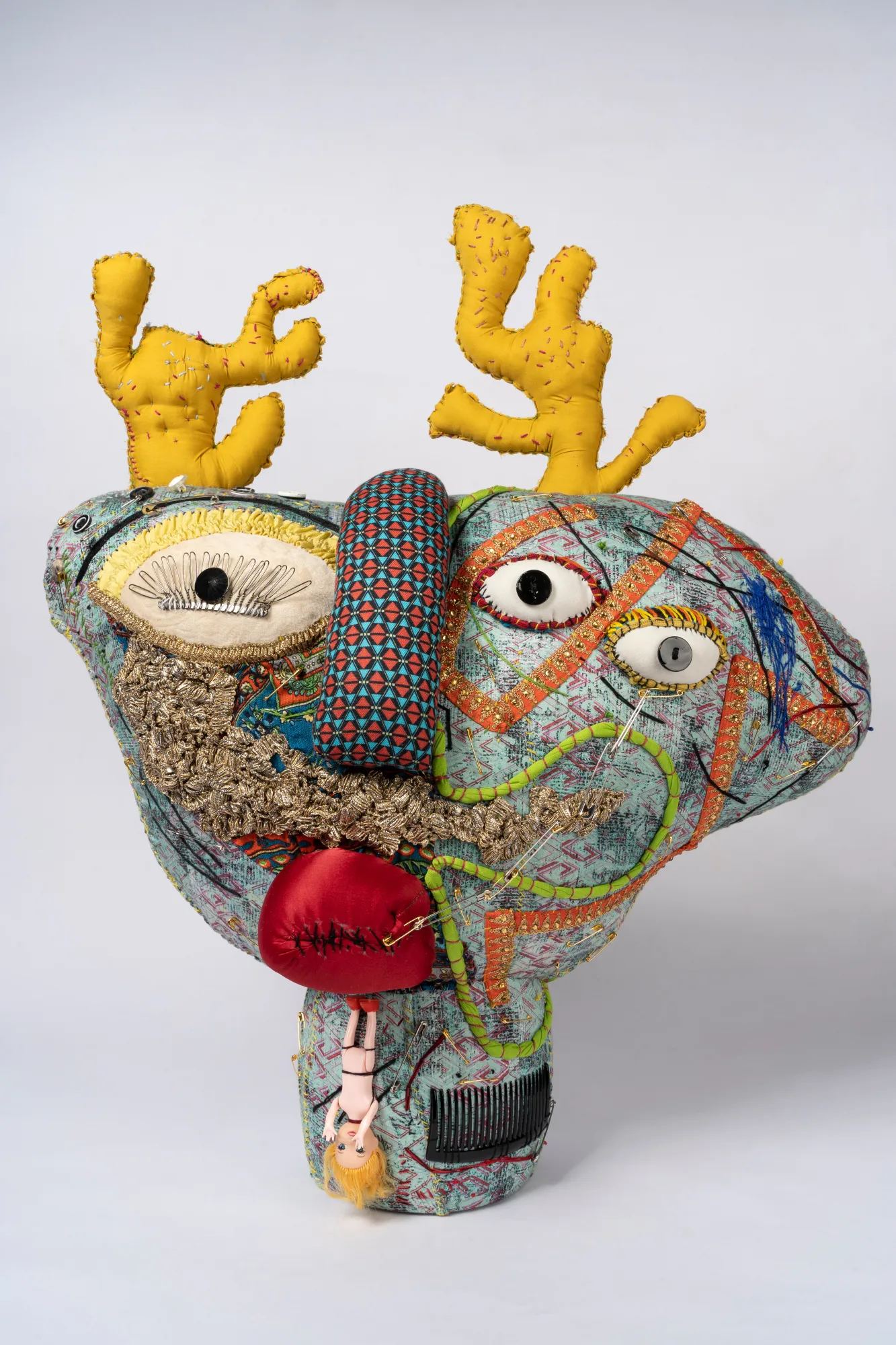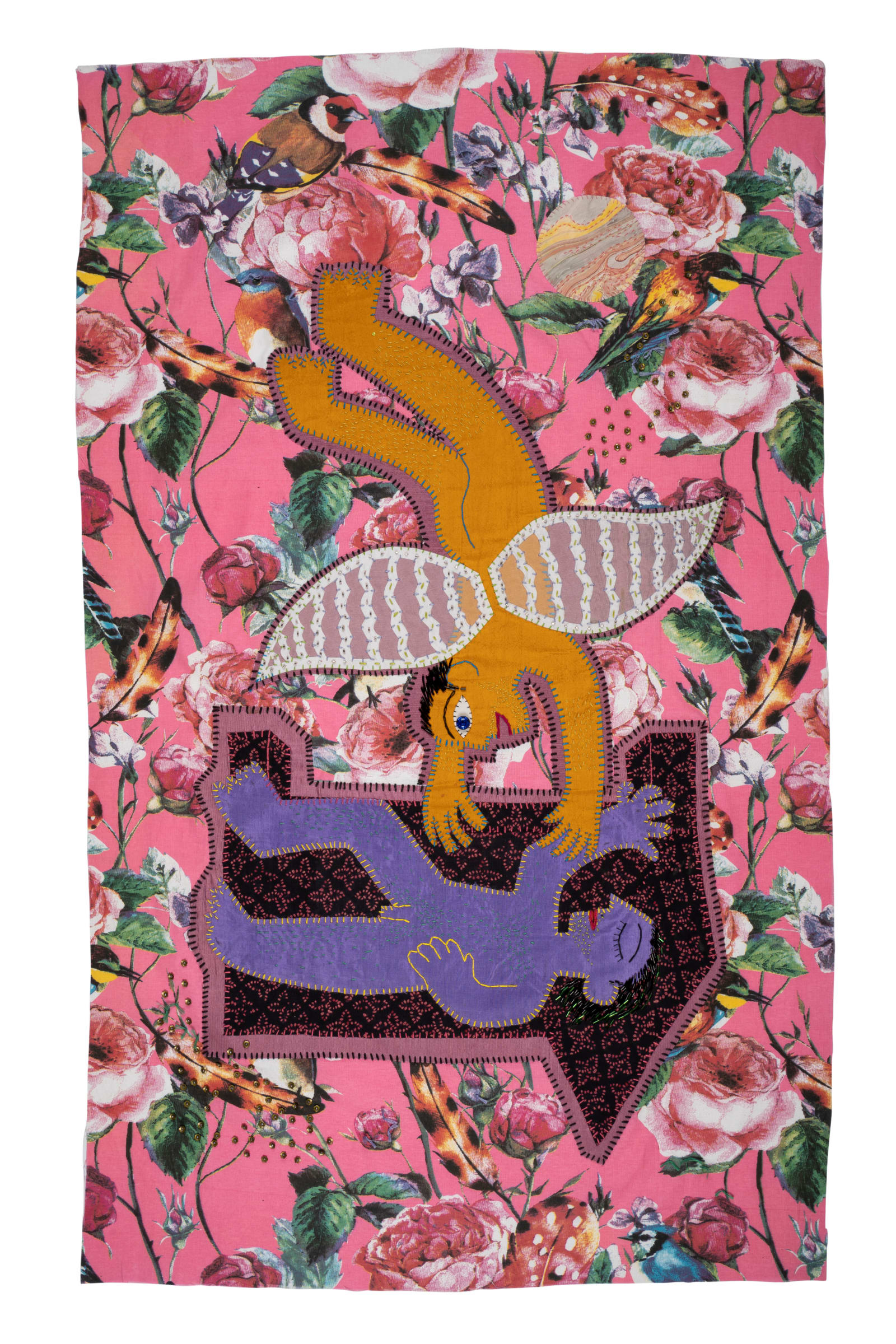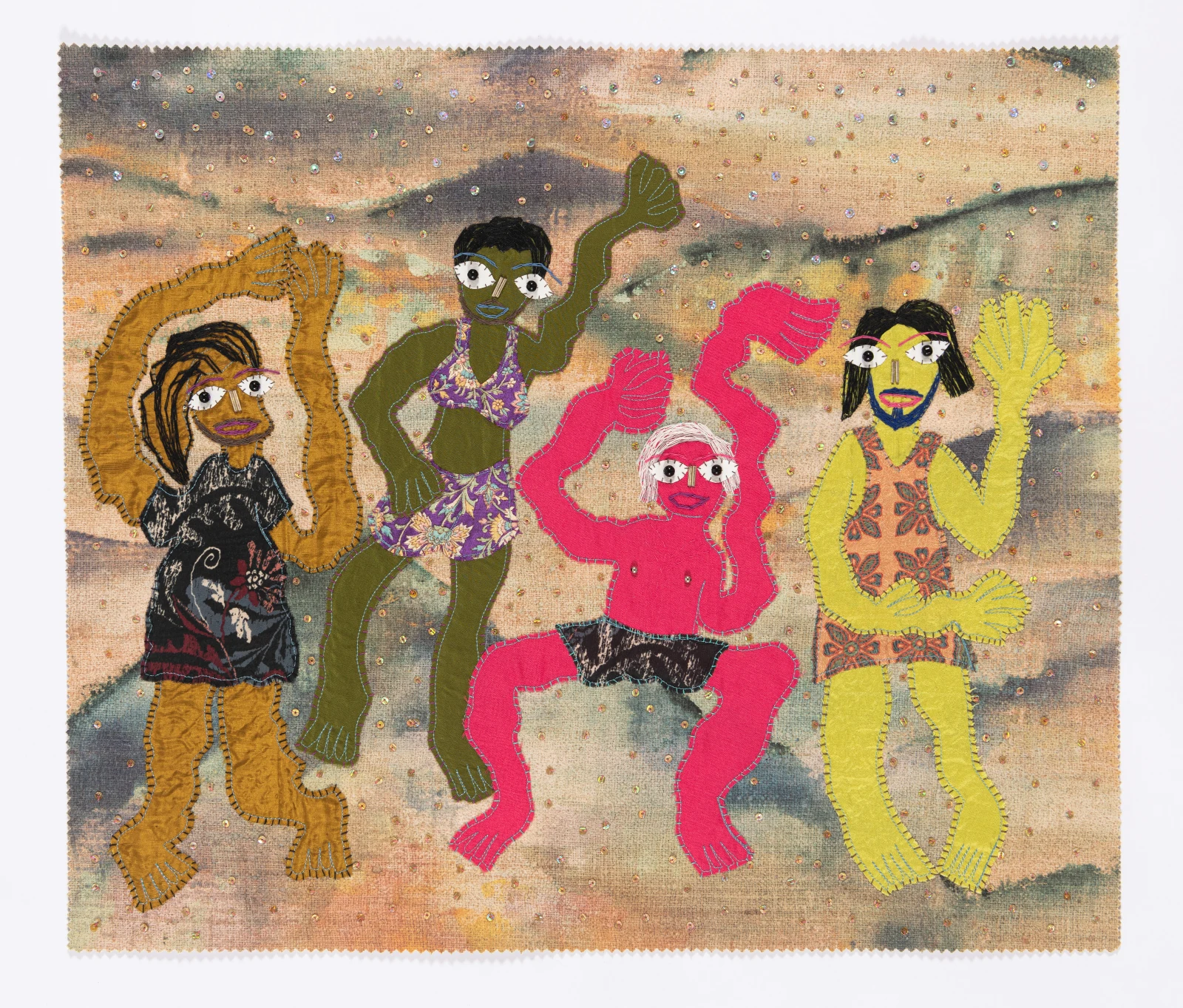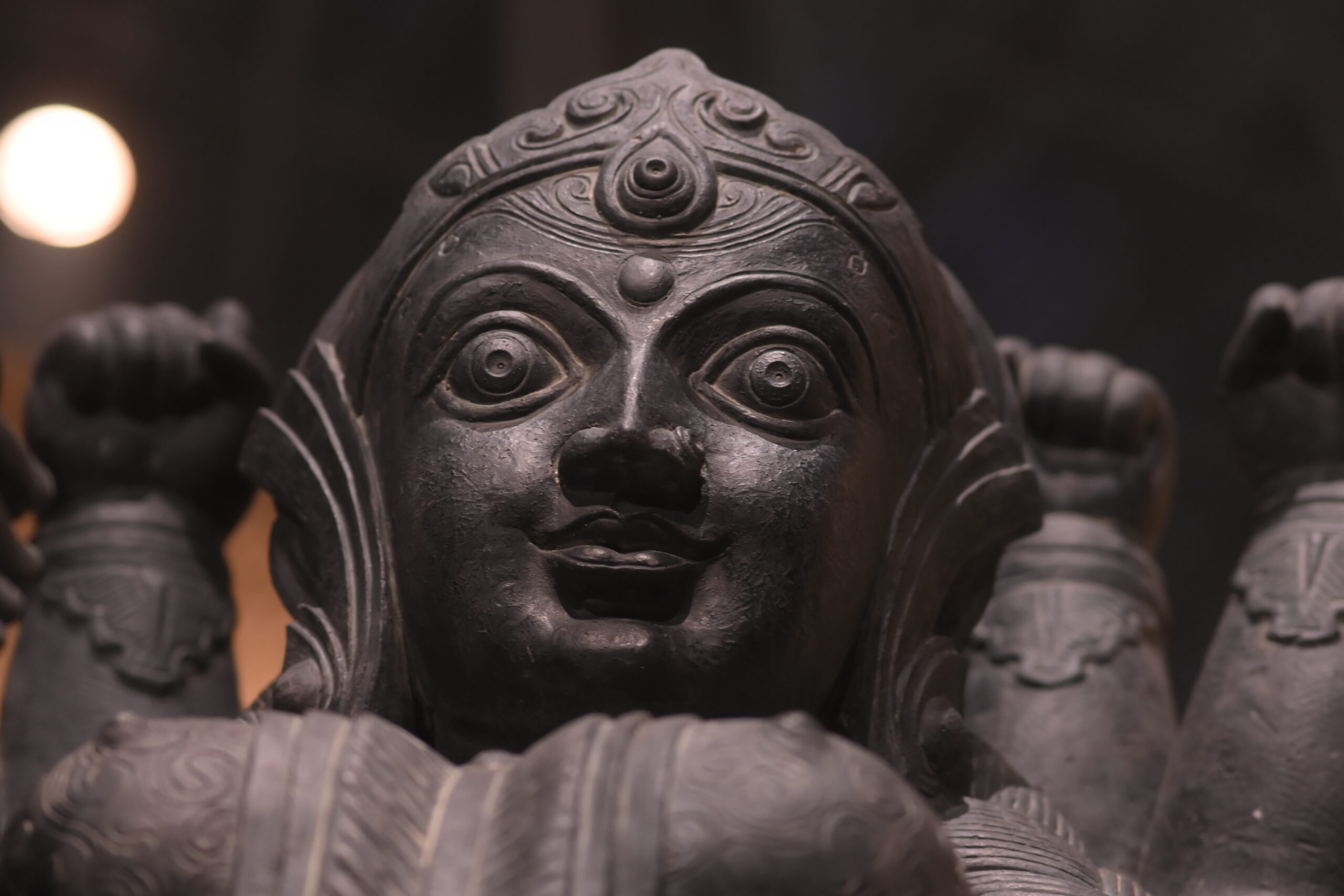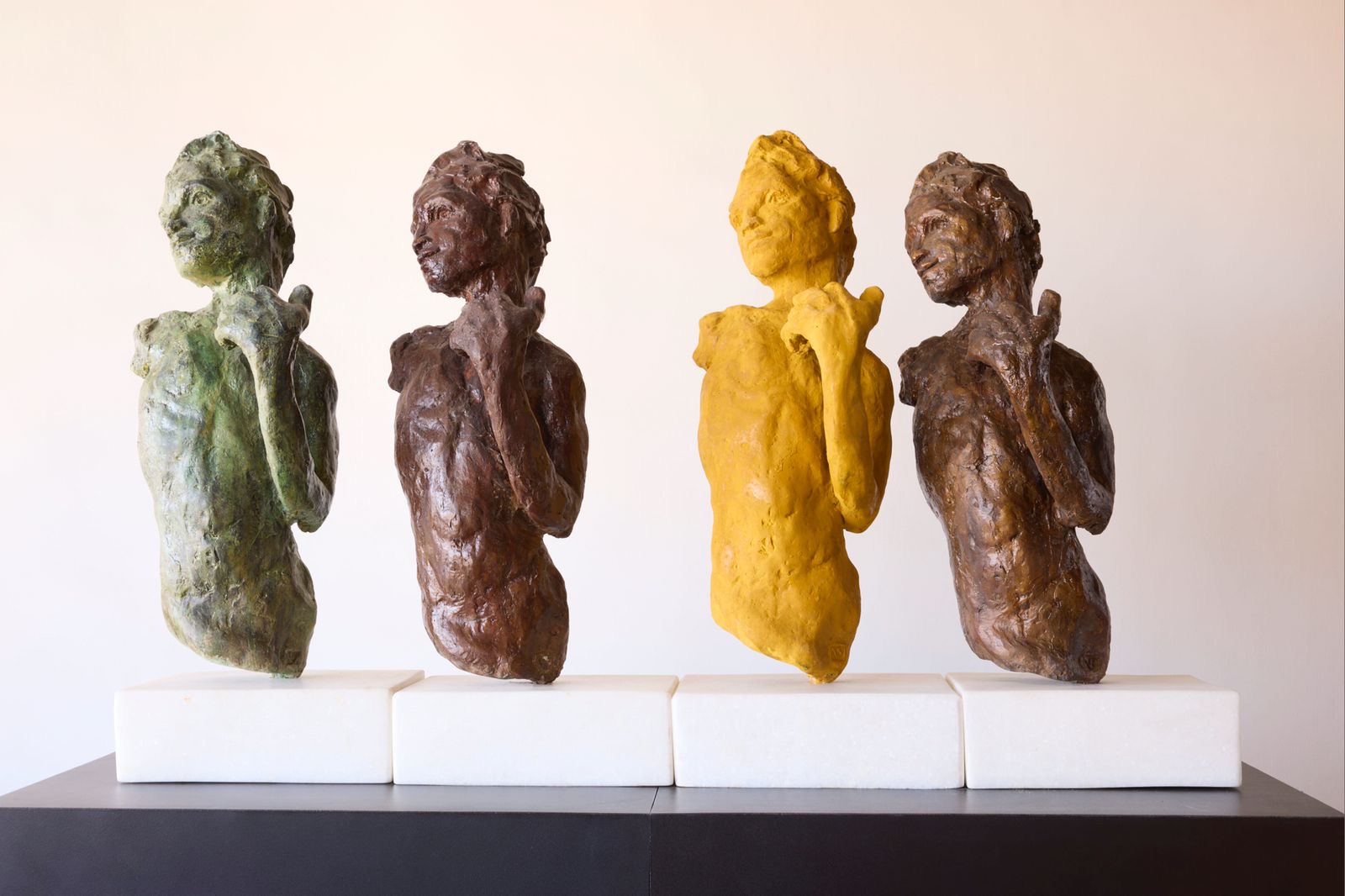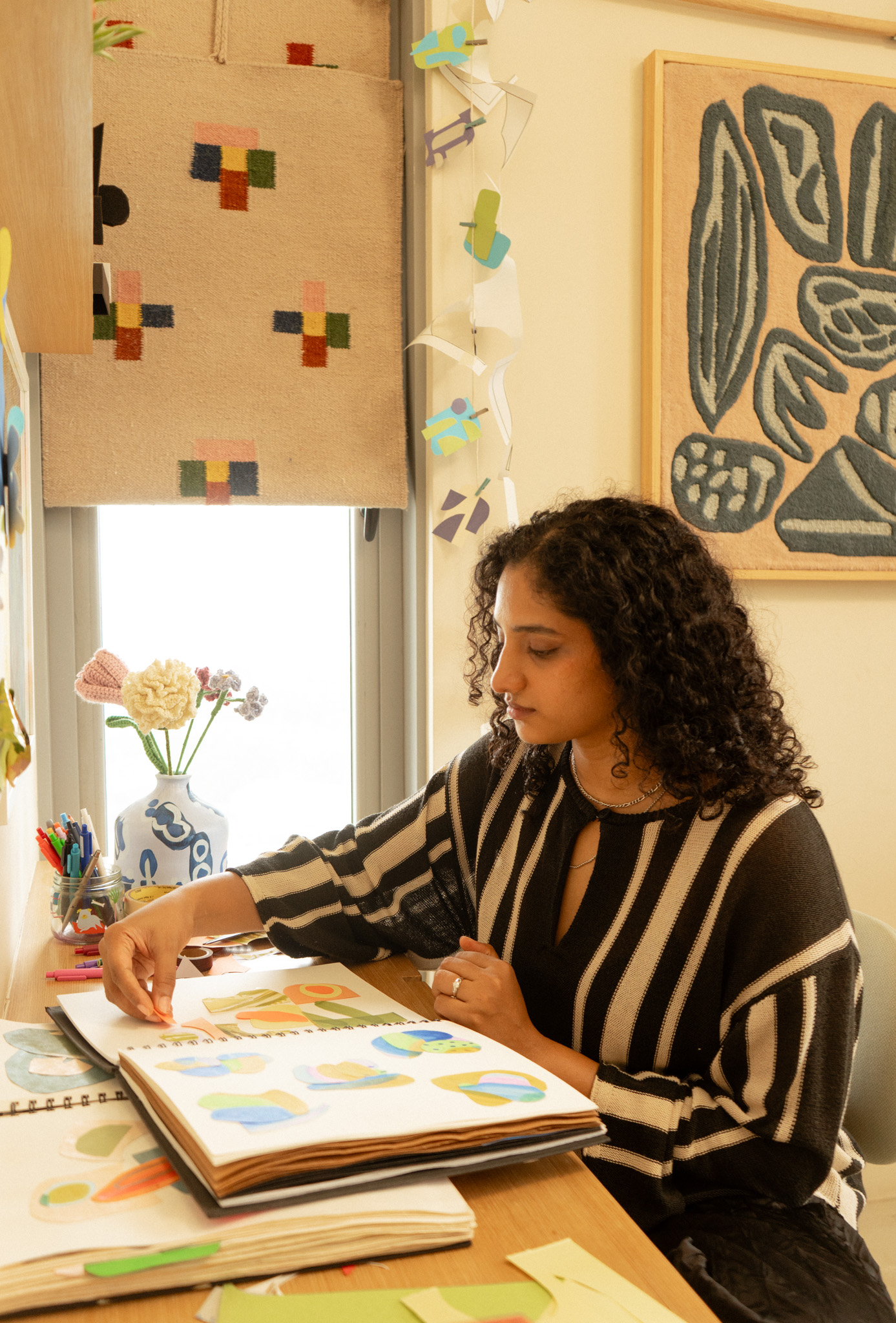Gurjeet Singh’s artistic journey is one of discovery, self-expression, and resilience. Born in 1994 in Algon Kothi, Punjab, Singh grew up in an environment deeply infused with craft and creativity. His household was constantly engaged in textile work—embroidering bed sheets, stitching clothes, and knitting sweaters; meanwhile, his father, a mechanic, worked on motorcycles, exposing Singh to another form of hands-on craftsmanship. These influences, although not immediately apparent, would later inform his artistic language in profound ways. In a recent conversation, Singh greeted us electronically from his Chandigarh-based home-cum-studio, where we discussed at length his recurring themes of identity, love, and loss that have shaped not only his craft, but the very life he has, and continues to, live.
Singh’s childhood was shaped by an inspiring affinity for sewing and knitting skills—while rarely associated with boys in his community—nonetheless commonly found in his household of six siblings, who were always involved in such work. As a child, the word ‘art’ only took on a serious dimension after high school, when his teachers recognised his prodigious talent of making posters and decorating registers and encouraged him to join the Government College of Art, Chandigarh. “This is when I realised that perhaps I did not belong in this atmosphere and needed a change—and shifting to an art college may help”.
I was lucky that I got admitted to the sculpture department—but I did not know what that meant, so I left it! I thought that being a sculptor meant making water-tanks of different shapes and designs that one noticed all across Punjab.
A two-year diploma introduced the artist to oils, acrylics, and other artistic mediums, solidifying a passion that ultimately led him to being admitted to the painting department in 2013. Here, he spent four years exploring various techniques, traveling to Chamba and Lucknow to study the wash technique and examining manuscript paintings, as well as terracotta sculptures. But Gurjeet Singh found in fabric a transformative discovery as late as 2018, when a serendipitous moment allowed the artist to craft a felt sculpture keychain for a friend.
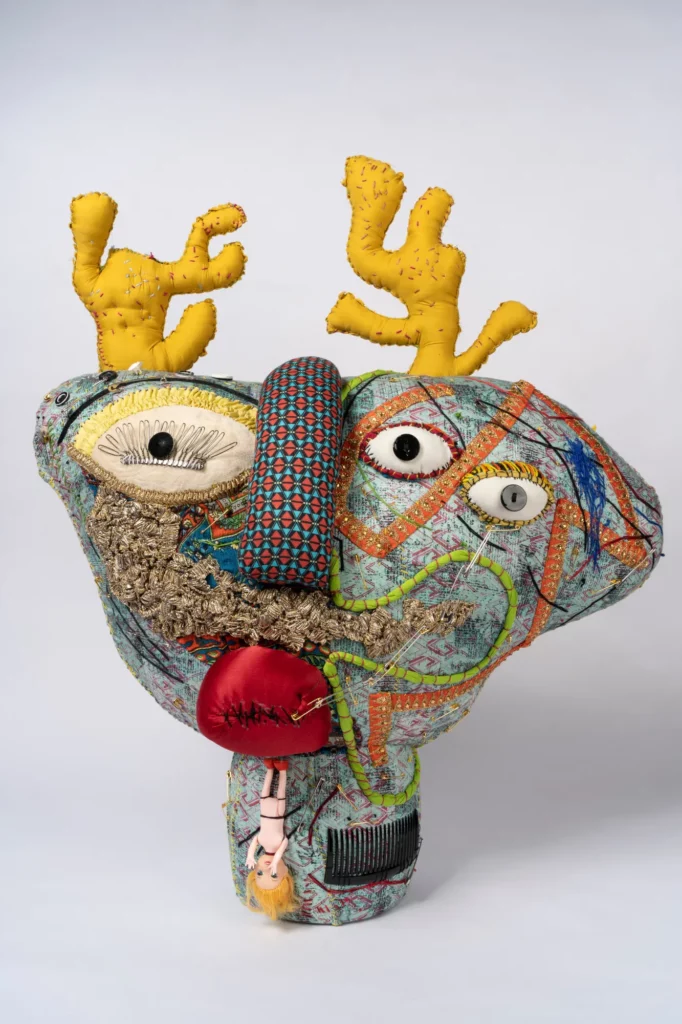
Sile Bolna (stitched lips), 2022. Cotton, linen, polyester, cotton embroidery, beads, buttons, plastic doll and comb. 25 x 21 x 12 in. Image courtesy of Artist and Gallery Chemould CoLab
I stood back, saying—waah, kuch toh baat hai isme! Holding my first soft sculpture in hand (Lady with Pink Lips), I saw endless possibilities, an unending magic and madness that made me realise, I can create and form something I always wanted to!
This discovery felt both organic and electrifying, igniting a newfound creative passion. Singh’s sculptural works soon gained recognition when he won an award at the Punjab Lalit Kala Akademi’s exhibition, garnering special praise from jurors Mithu Sen and Sonia Khurana. Initially, Singh’s use of fabric often led to the assumption that his work was created by a woman—an observation he embraced rather than resented. Having grown up hearing remarks about his interests being ‘unconventional’ for a boy, Singh found solace in the expressive power of textiles. When we look at works such as Log Kya Bolenge (2021), we are made aware of a material that, for Singh, became an extension of his identity, allowing him to articulate emotions and experiences that were otherwise difficult to convey. In the cotton embroidered animal, the artist deliberately resists on making things familiar—making us confront our own established views and ideas about what inhabits our surroundings, what behaviours remain just. Such an engagement with themes of identity and gender deepened as he completed his residency at Khoj Studios in Delhi, Space Studio in Baroda (“Yahaan se toh artist paida hote hai, yahaan toh jaana hi hai!”), and HH Art Space in Goa.
His work often stems from deeply personal experiences and observations of everyday life. One such moment came when his sister-in-law’s gold ring fell into a toilet, prompting Singh to reflect on the material and social value of objects. Middle-class anxieties surrounding loss and possession intrigued him, leading him to create works that incorporated unconventional materials such as Indian-style squat toilets. This shift from two-dimensional painting to tactile, three-dimensional work—at a time in 2017-18, when Singh’s pursuits did not involve soft sculptures and other fabric works—allowed Singh to engage viewers on a sensory level, making his art more immersive and experiential.
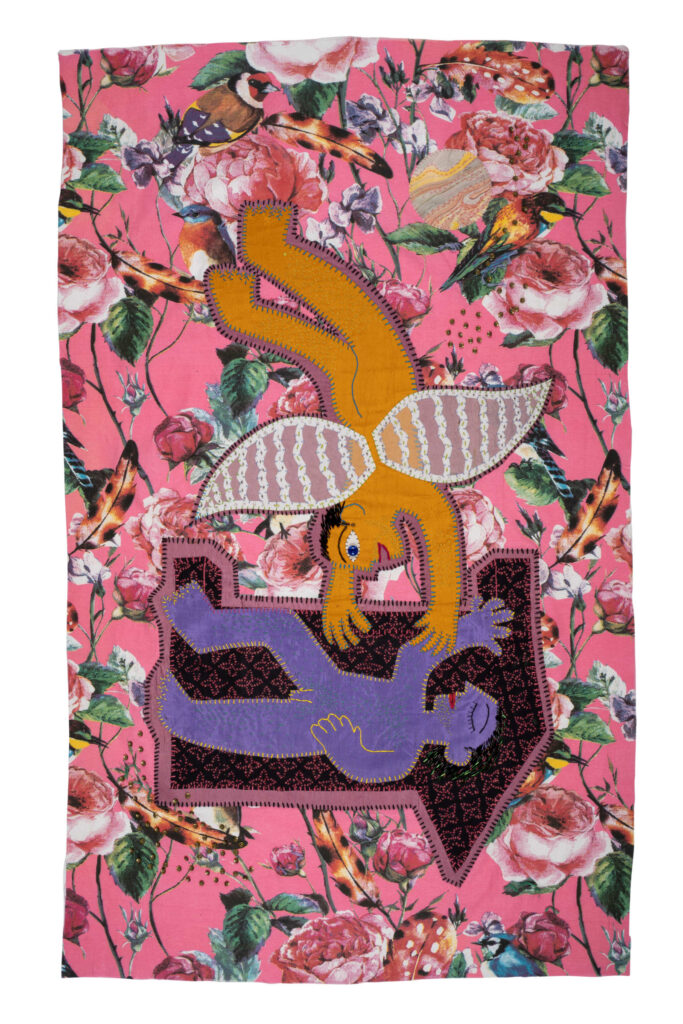
Lovers (Dream Sequence), 2022. Cotton, linen, cotton threads, embroidery stones, beads and buttons. 44 x 27 in. Courtesy of Artist and Gallery Chemould CoLab
I was grateful to meet artists like Atul Dodiya, Thukral & Tagra, Vibha Galhotra, Nikhil Chopra, Manjot Kaur, Diwan Manna and others early in my career. Mentorship is such an important part of an artist’s career—because senior artists have already experienced and answered the questions you ask, you can rely on them.
Working with Chemould CoLab allowed the artist to truly realise the potential of his works. Marked by immense trust and creative freedom, Singh recounts how he would notoriously refrain from sharing progress surrounding his works, until the final month of his most recent solo, ‘To kill a bully with kindness’ opened. Playfulness aside, he has always been keen to remain ‘true’ to his practice, remaining unfettered in his worry about exhibitions and their displays. Thriving on challenges, his participation in the group show ‘Continuum’ was a demanding and transformative process, offering him the opportunity to draw parallels between his own experiences and Bhupen Khakkar’s. Teeming with the notion of loneliness amid social vibrancy, Singh’s artworks like Party with Bhupen Khakhar (2023) imagined an intimate connection with Khakkar—wishing he could dance with him, a sentiment he ultimately depicted in his art. His surroundings also played a vital role in shaping his creative process. A chance encounter in the Delhi metro, where he observed a couple sharing an intimate moment despite the sweltering heat, struck him with its innocence and tenderness—compelling him to capture it in the work Ice cream date (2023).
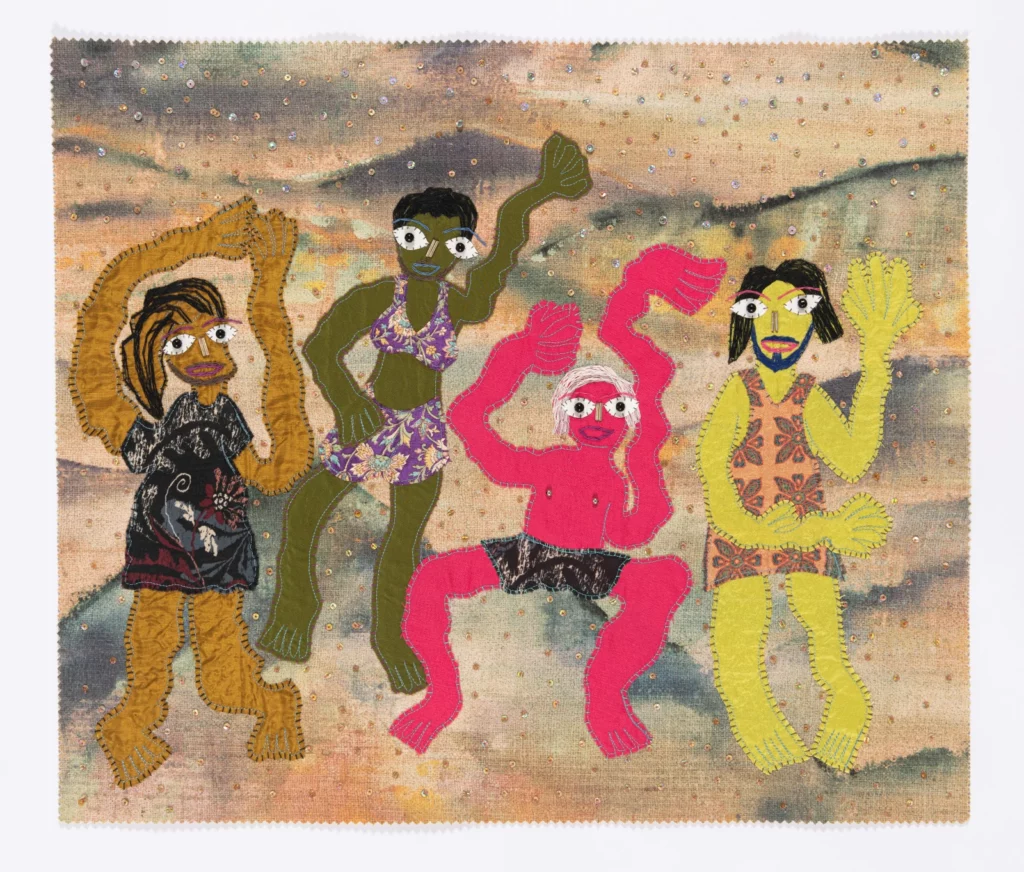
Party with Bhupen Khakhar, 2023. Cotton, linen, cotton thread, sequence, buttons and beads. 23 x 20 in. Image courtesy of Artist and Gallery Chemould CoLab
It is interesting to note that despite his deep connection to the art world, Singh confesses that he did not visit a museum until his undergraduate years. His early influences came from visits to gurudwaras with his family, where Sikh history was depicted through sculptures, murals and paintings. His father, an avid collector of newspaper cuttings featuring art, instilled in him an appreciation for visual storytelling (“There was a separate room reserved for such memorabilia, which was only opened when guests came over—and even then, no children were allowed!”). It has been this humbleness, this humility towards his roots, that Singh has remained particularly steadfast in his vision. Singh’s advice to young artists is simple: “Don’t overthink. Talk to others, but make your own decisions”. He believes that while mentorship and guidance are invaluable, each artist’s journey is unique and cannot be defined by another’s experience. He encourages emerging artists to focus on image-making rather than external expectations. And while galleries provide essential support, they cannot dictate an artist’s journey. True artistic growth, he asserts, comes from introspection and self-driven exploration.
When I met Pallavi Paul at Khoj, she was clear about one thing—‘Gurjeet, don’t think so much, just do it!’ A simple suggestion, but it allowed me to feel much more confident to experiment with various mediums. Thoughts can come after you have experimented; sometimes this may fail, but that is also an important learning.
For Singh, art is not just about aesthetics—it is a tool for self-discovery, social commentary, and emotional resonance. Whether through fabric, sculpture, or mixed media, the artist remains committed to creating artworks that speak to identity, memory, and the intricacies of human experience. “Hum bas kaam banate rehte hai,” the artist opens up, “But it feels good when you also get to see how impactful your artwork is, how it inspires others along their journey”. As his journey unfolds, one thing remains certain: Gurjeet Singh is an artist unafraid to embrace the fluidity of his medium, his identity, and his ever–evolving creative spirit.
